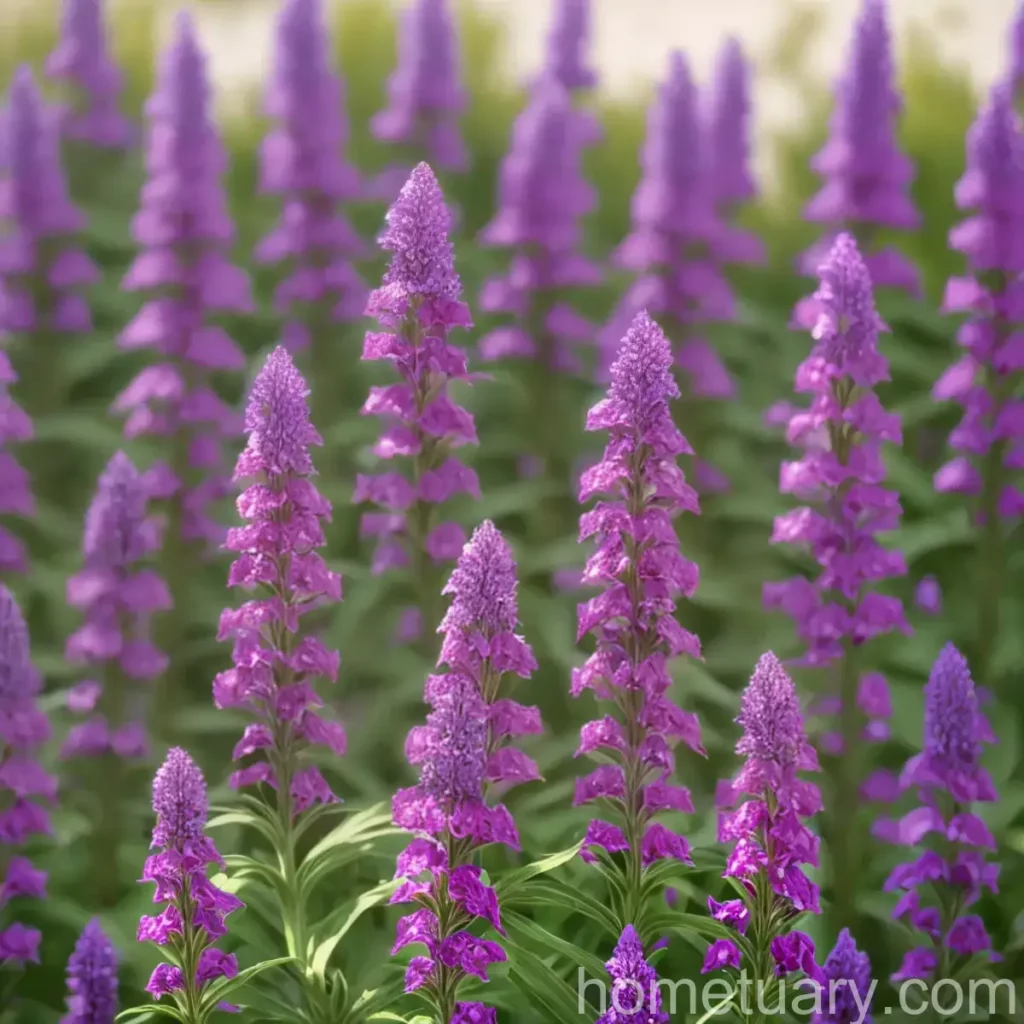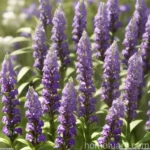Plant Profile: Beardtongue (Penstemon ‘Red Rocks’)
Introduction
Beardtongue, scientifically known as Penstemon ‘Red Rocks,’ is a stunning perennial plant that is highly valued for its vibrant flowers and its hardy nature. This species belongs to the Penstemon genus, which comprises over 250 species of flowering plants native to North America. ‘Red Rocks’ is a cultivar known for its brilliant red blooms, making it a popular choice for gardeners and landscapers alike. In this comprehensive plant profile, we will explore the cultivation, care, and uses of beardtongue, shedding light on how to best appreciate and harness the beauty and benefits of this remarkable plant.
Key Takeaways – Beardtongue (Penstemon ‘Red Rocks’)
Here are the key takeaways for the beardtongue (Penstemon ‘Red Rocks’) plant, which will be further explored in detail throughout this article:
1. Culture
2. Uses
3. Water
4. Sunlight
5. Fertilizer
6. Soil
7. Pruning
8. Propagation
9. Container Popularity
10. Common Diseases
11. Disease Diagnosis
12. Common Pests
13. Botanist’s Tips
14. Fun Facts
15. Links to External Resources
Culture
In the realm of horticulture, understanding the cultural requirements of a plant is fundamental for its successful growth and development. Beardtongue, or Penstemon ‘Red Rocks,’ thrives under specific conditions that are essential for its overall well-being.
Water
Beardtongue plants are relatively drought-tolerant once established. However, during their initial growth phase and in prolonged periods of drought, regular watering is necessary. It is crucial to keep the soil evenly moist, but not waterlogged, to prevent water-related stress on the plant.
Watering Requirements for Beardtongue ‘Red Rocks’:
– Established Plants: Once established, beardtongue ‘Red Rocks’ generally requires minimal supplemental watering.
– Young Plants: Water young plants regularly, aiming for even moisture.
– Drought Conditions: During drought conditions, provide additional water as needed, ensuring that the soil does not dry out completely.
Sunlight
Beardtongue plants exhibit a preference for full sun to partial shade. They flourish when exposed to ample sunlight, which contributes to robust growth and prolific flowering. When choosing a planting location for beardtongue ‘Red Rocks,’ it is important to consider its sunlight requirements to ensure optimal performance.
Sunlight Preferences for Beardtongue ‘Red Rocks’:
– Full Sun: Position the plant in an area that receives at least 6-8 hours of direct sunlight per day for best results.
– Partial Shade: While beardtongue can tolerate some shade, it generally thrives in full sun conditions.
Fertilizer
Proper fertilization is instrumental in promoting the health and vitality of beardtongue ‘Red Rocks.’ A balanced and nutrient-rich fertilizer can contribute to the plant’s overall vigor and enhance its blooming capacity, resulting in a visually stunning display of flowers.
Fertilizing Beardtongue ‘Red Rocks’:
– Timing: Apply a balanced fertilizer in early spring before the start of active growth.
– Frequency: Repeat fertilization during the growing season at intervals of 4-6 weeks to sustain the plant’s nutrient requirements.
– Type of Fertilizer: Consider using a slow-release granular fertilizer or a water-soluble fertilizer suited for flowering perennials.
Soil
The soil composition and quality play a significant role in the successful cultivation of beardtongue ‘Red Rocks.’ Providing the plant with suitable soil conditions is crucial for ensuring its long-term health and performance.
Optimal Soil Conditions for Beardtongue ‘Red Rocks:
– Well-Draining Soil: Select a well-draining soil mix, as beardtongue is susceptible to root rot in waterlogged conditions.
– pH Level: Beardtongue prefers slightly acidic to neutral soil with a pH range between 6.0 and 7.0.
– Soil Amendments: Incorporating organic matter such as compost or well-rotted manure can enhance the soil structure and fertility.
Pruning
Pruning is an essential aspect of beardtongue maintenance, contributing to the plant’s aesthetics, vigor, and longevity. Proper pruning techniques can help manage the plant’s size, shape, and flowering capacity, ensuring its continuous health and vitality.
Pruning Techniques for Beardtongue ‘Red Rocks’:
– Deadheading: Regularly remove spent flowers to encourage continuous blooming and to prevent the formation of seeds.
– Trimming: Trim back the plant in early spring to remove any damaged or overgrown foliage, stimulating new growth.
– Division: Periodically divide mature clumps of beardtongue to rejuvenate the plant and maintain its vigor.
Propagation
Propagating beardtongue ‘Red Rocks’ allows gardeners to expand their plant collection and share the beauty of this perennial with others. Several methods can be employed to propagate beardtongue, including division, cuttings, and seed propagation.
Methods of Propagating Beardtongue ‘Red Rocks’:
1. Division: Divide mature plants in spring or fall, separating the root ball into individual sections to be replanted.
2. Softwood Cuttings: Take softwood cuttings in early summer and root them in a moist, well-draining medium to establish new plants.
3. Seed Propagation: Collect and sow seeds in spring, providing optimal conditions for germination and seedling growth.
Container Popularity
Beardtongue ‘Red Rocks’ is well-suited for cultivation in containers, adding versatility and charm to outdoor spaces. Its adaptability to container gardening makes it a preferred choice for individuals with limited garden space or those seeking to enhance their patio, balcony, or deck with vibrant floral displays.
Considerations for Container Cultivation:
– Container Size: Select a spacious container that accommodates the plant’s root system and allows for adequate growth.
– Drainage: Ensure that the container has drainage holes to prevent water accumulation and root rot.
– Potting Mix: Use a well-draining potting mix formulated for perennial plants to support healthy growth in containers.
Uses
Beardtongue ‘Red Rocks’ serves not only as an ornamental plant but also holds cultural, ecological, and horticultural significance. Its versatility and aesthetic appeal make it a valuable addition to diverse settings, ranging from residential gardens to public landscapes.
Versatility of Beardtongue ‘Red Rocks’:
– Ornamental Beauty: The striking red flowers of beardtongue ‘Red Rocks’ make it a captivating choice for adding color and visual interest to garden beds, borders, and landscapes.
– Pollinator Attractor: The vibrant blooms of beardtongue attract pollinators such as bees, butterflies, and hummingbirds, contributing to the ecological diversity of the surrounding area.
– Cut Flowers: Harvest the long-lasting flowers for floral arrangements, bringing the beauty of beardtongue indoors.
Common Diseases
Recognizing and addressing potential diseases is crucial in protecting the health and vigor of beardtongue ‘Red Rocks.’ Being aware of common diseases that affect this plant enables proactive management and care to prevent detrimental outcomes.
Common Diseases Affecting Beardtongue ‘Red Rocks’:
1. Powdery Mildew: A fungal disease that manifests as white powdery patches on the foliage, often due to poor air circulation and high humidity.
2. Root Rot: Excessive moisture and waterlogged soil can lead to root rot, causing wilting, yellowing, and decay of the roots.
3. Leaf Spot: Characterized by dark spots or lesions on the foliage, leaf spot diseases can weaken the plant and reduce its aesthetic appeal.
Disease Diagnosis
Diagnosing diseases in plants requires a keen observation of symptoms and a systematic approach to identifying the underlying causes. In the case of beardtongue ‘Red Rocks,’ prompt diagnosis and appropriate action are essential for mitigating the impact of potential diseases.
Diagnosing Diseases in Beardtongue ‘Red Rocks’:
– Symptom Identification: Carefully observe the plant for signs of discoloration, wilting, spots, or unusual growth patterns.
– Environmental Assessment: Evaluate the growing conditions, such as moisture levels, air circulation, and soil quality, to assess potential contributors to disease.
– Professional Consultation: Seek advice from a horticulturist or plant disease expert for accurate diagnosis and guidance on disease management.
Common Pests
Pests can pose a threat to the health and vitality of beardtongue ‘Red Rocks,’ necessitating vigilant monitoring and appropriate pest control measures. Familiarizing oneself with common pests that target this plant is essential for implementing effective pest management strategies.
Common Pests Affecting Beardtongue ‘Red Rocks:
1. Aphids: These small, soft-bodied insects feed on the plant sap, leading to distorted growth and the transmission of viral diseases.
2. Spider Mites: These tiny arachnids can cause stippling, discoloration, and webbing on the leaves, particularly in dry and dusty conditions.
3. Leafhoppers: Leafhoppers can cause stippling and yellowing of the foliage through their feeding activities.
Botanist’s Tips
Drawing upon botanical insights and expertise can enrich one’s approach to cultivating and appreciating beardtongue ‘Red Rocks.’ Botanist-approved tips offer valuable guidance and recommendations for maximizing the potential of this plant in various contexts.
Botanist’s Tips for Beardtongue ‘Red Rocks:
1. Native Habitat: Gain an understanding of the native habitat and ecological associations of beardtongue to inform its cultivation and landscape integration.
2. Pollinator Conservation: Emphasize the role of beardtongue in supporting pollinators and ecological balance within the surrounding environment.
3. Cultural Significance: Explore the cultural and ethnobotanical significance of beardtongue, particularly in relation to indigenous uses and traditional practices.
Fun Facts
Uncovering intriguing and lesser-known facts about beardtongue ‘Red Rocks’ adds an element of fascination and appreciation to its cultivation. From historical anecdotes to ecological adaptations, fun facts enrich the understanding and enjoyment of this remarkable plant.
Fascinating Facts about Beardtongue ‘Red Rocks:
1. Native Range: Beardtongue species are native to diverse ecosystems across North America, contributing to the continent’s floral diversity.
2. Genus Name: The genus name “Penstemon” is derived from the Greek words “penta” (five) and “stemon” (stamen), referencing the plant’s distinctive five stamens.
3. Ecological Value: Beardtongue species contribute to the maintenance of biodiversity and the sustenance of pollinators through their floral resources.
Links to External Resources
For further exploration of beardtongue (Penstemon ‘Red Rocks’), the following resources provide valuable information, insights, and visual references:
– The American Penstemon Society: A dedicated organization offering resources, publications, and community engagement focused on Penstemon species.
– Royal Horticultural Society – Beardtongue (Penstemon): A comprehensive guide from the Royal Horticultural Society providing in-depth information on the cultivation and care of Penstemon species.
– University of Wisconsin Garden Fact Sheet – Penstemon: An educational resource offering insights into the diversity and cultivation of Penstemon plants, including ‘Red Rocks’ varieties.
– North American Native Plant Society: A platform dedicated to the promotion and conservation of native North American plants, offering insights into the ecological significance of beardtongue species.
In conclusion, the captivating beauty, ecological significance, and horticultural value of beardtongue (Penstemon ‘Red Rocks’) make it a cherished addition to gardens, landscapes, and natural habitats. By understanding its cultural requirements, uses, and ecological contributions, individuals can cultivate, appreciate, and conserve this remarkable plant, embracing its role in enhancing biodiversity and enlivening outdoor spaces.
Disclaimer: The information provided in this article is for educational and informational purposes and should not be considered as professional gardening advice. For specific guidance on the cultivation and care of plants, consulting with local horticultural experts and extension services is recommended.















